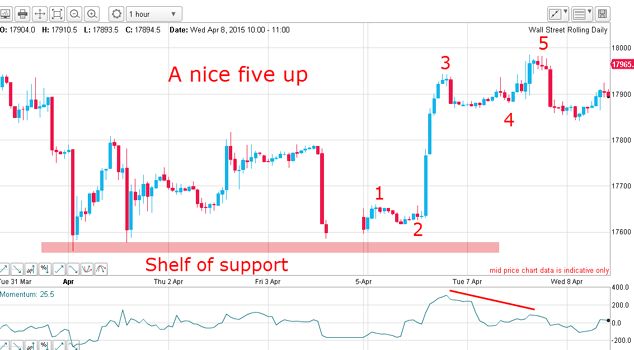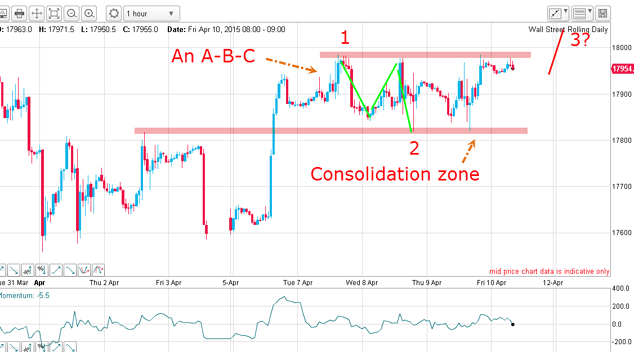My Dow signals are contradicting each other – it’s no time to be trading
In recent days, the Dow has been a nightmare to figure out. At times like these, it's best to let the market alone, says John C Burford.
Traders are always itching to have a trade on if they do not have one. It's as if they feel naked being out of the market. Giving in to the urge to overtrade can lead to many small losses that can really add up.
I confess I was guilty of this sin when I started out it is a common problem.
An over-trader will see every small swing as significant, looking for a signal to take a position before the market runs away.
MoneyWeek
Subscribe to MoneyWeek today and get your first six magazine issues absolutely FREE

Sign up to Money Morning
Don't miss the latest investment and personal finances news, market analysis, plus money-saving tips with our free twice-daily newsletter
Don't miss the latest investment and personal finances news, market analysis, plus money-saving tips with our free twice-daily newsletter
Most of the time, it is best to let the market alone. As traders, we all want to get on board the next big trend, but in reality, markets spend far more time in consolidation mode than they do making vigorous thrusts in a particular direction. But it is the directional thrusts that provide us with the profitable setups.
Trading in a consolidation zone most often leads to whipsaw losses. You believe the market is moving up. You take a long position, expecting the market to move up out of the zone in a thrust. But the market bounces back down into the zone and hand you a loss.
I love trading the Dow but I'm steering clear right now
My daily chart is below. From last November to February, the market has traded within the zone contained roughly by my pink bars. Then in late February, the market moved up out of the zone, and it appeared that the upward trend would continue.

Many traders had positioned short in this period and would be expected to have protective buy stops above the zone. These buy stops, plus buying from traders who saw the breakout, would normally provide the rocket fuel for a more vigorous rally leg.
But in March, powerful selling overcame this force and the market retreated back inside the zone. That is normally a bearish sign. But the decline formed on a three-wave A-B-C pattern (corrective) with a small positive momentum divergence at the C wave low. That was a conflicting bullish sign.
So in early April, we had two opposing signals which one would win out?
Here is the hourly chart showing the rally starting early this month: the rally has a lovely five-wave form complete with a huge momentum divergence at the wave 5 high:

The equally-valid alternative scenario was for the wave 5 high to represent wave 1 of a larger five-wave affair (or even wave A of a larger A-B-C). This would imply a further move up.
Has the mist cleared this morning?

This makes the above scenario slightly more likely a thrust above the zone in either a wave 3 or a C wave.
But the wave 5/wave 1 high has not yet been decisively broken to the upside.
Because the odds of a break down and a rally from here (Dow at 17,950) appear to be evenly matched, I will stay out of the market until I see the fog clear.
This is no time to be over-trading!
Get the latest financial news, insights and expert analysis from our award-winning MoneyWeek team, to help you understand what really matters when it comes to your finances.
John is is a British-born lapsed PhD physicist, who previously worked for Nasa on the Mars exploration team. He is a former commodity trading advisor with the US Commodities Futures Trading Commission, and worked in a boutique futures house in California in the 1980s.
He was a partner in one of the first futures newsletter advisory services, based in Washington DC, specialising in pork bellies and currencies. John is primarily a chart-reading trader, having cut his trading teeth in the days before PCs.
As well as his work in the financial world, he has launched, run and sold several 'real' businesses producing 'real' products.
-
 Football fans issued warning over ticket scams ahead of 2026 World Cup
Football fans issued warning over ticket scams ahead of 2026 World CupSantander customers lost more to football scams in the first six months of 2025 compared to the same period in 2024, when total losses surged due to the Euros
-
 Nationwide fined £44 million over “inadequate” anti-money laundering systems
Nationwide fined £44 million over “inadequate” anti-money laundering systemsFailings in Nationwide’s financial crime processes between October 2016 to July 2021 meant one criminal was able to deposit £26 million from fraudulent Covid furlough payments in just eight days.